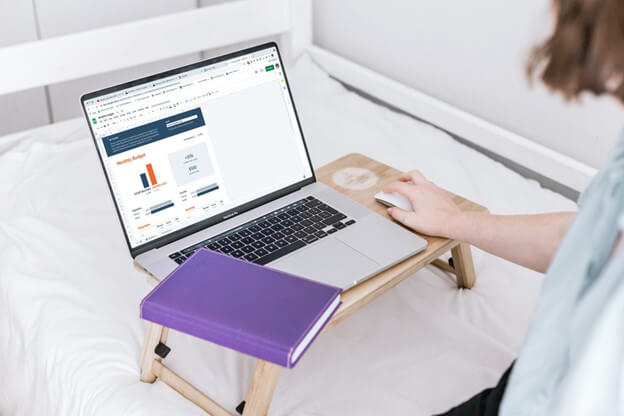2022 Year-End Tax Planning Tips for Businesses
The following is a brief overview of year-end tax saving strategies for businesses.
Qualified Business Income (QBI) Deduction. The Qualified Business Income Deduction, also known as the Section 199A deduction, allows eligible business owners to claim a tax deduction worth up to:
- 20% of their qualified business income (QBI), plus
- 20% of qualified real estate investment trust (REIT) dividends, and
- 20% of qualified publicly traded partnership (PTP)
This is one of the few provisions under the Tax Cuts and Jobs Act (TCJA) that is set to expire after 2025.
Qualified Business Income” (QBI) is essentially net profits from “any” pass-through trade or business, subject to certain limitations and exclusions:
1. Certain personal service businesses known as “Specified Service Trade Or Businesses” and
2. The trade or business of performing services “as an employee.”
A “Specified Service Trade or Business” (SSTB) is any trade or business activity where the principal asset of such trade or business is the reputation or skill of one or more of its employees. Certain industries are also automatically classified as an SSTB due to the nature of the services rendered (i.e., law, accounting, performing arts, consulting, etc.).
Qualifying owners with total taxable income before your QBI deduction is less than or equal to $170,050 if single, married filing separately, head of household, qualifying widow(er), or are a trust or estate, or $340,100 if married filing jointly.
If your income is over the above thresholds, the ability to claim a modified QBI deduction attributable to an SSTB is phased out over $100,000 of taxable income in excess of $340,000 if filing Married Jointly ($50,000 of taxable income in excess of $170,500 if single or head of household)
If your income exceeds $220,050 if single, married filing separately, head of household, qualifying widow(er) or are a trust or estate, or $440,100 if married filing jointly, then you are not eligible for a QBI deduction.
Choice of Entity
Year-end is a good time to examine the appropriateness of your entity structure to ensure it aligns with your needs and evaluate the possibility of changing your structure.
Business structures differ mainly in how they handle income taxation and owner liability. Many organizations choose a structure that combines pass through income taxation with limited liability for the owners—namely, limited liability companies or S-Corporations.
The tax on self-employment earnings increases the Social Security tax burden on income from businesses organized as partnerships or LLCs treated as partnerships and sole proprietorships for federal tax purposes. Since all ordinary income generated and passed through to owners from an active trade or business under the partnership rules are subject to the self-employment tax, utilizing an S corporation could minimize the impact.
At issue is how much of the company’s profit will be subject to self-employment taxes. As a partnership, the company’s profit is subject to self-employment taxes. However, as an S corporation, an owner must take “reasonable compensation” out of the company as W-2 wages which would be subject to payroll taxes, an equivalent of self-employment taxes. Any profit above these wages is not subject to self-employment taxes and are available to be taken out as distributions.
The TCJA drastically reduced the corporate income tax rate to 21%, which is significantly lower than the top individual income tax rate of 37%. In certain cases, business owners may benefit from shifting their operations to a corporate structure.
Equipment and Office Furniture Purchases
If you buy new or used equipment/furniture for your business or make certain improvements to property and place these assets into service before the end of the year, you could be entitled to a federal tax deduction of up to $1.08 million of the costs associated with these purchases/improvements under Section 179 provisions. The TCJA expanded the definition of section 179 property to include qualified improvements to nonresidential real property, which means certain improvement to a building’s interior and for improvements such as roofs, HVACs, fire protection systems, alarm systems, and security systems now qualify for the deduction. Additionally, most types of equipment and many interior building and leasehold improvements may be eligible for 100% Bonus Depreciation at the federal level. Vermont does not allow for bonus depreciation, meaning that in some cases, there may be differences between federal and state taxable income when bonus depreciation is elected. The deductions are available for new or used equipment purchased or financed and placed into service before December 31, 2022. For further details you can also visit section179.org.
Company Vehicles
Buying a new or used passenger auto for your business can lead to tax breaks. If bonus depreciation is claimed, the first-year depreciation cap is $19,200 for vehicles bought after September 27, 2017 and put in use this year. The second– and third-year caps are $18,000 and $10,800 and $6,460 for each year after that. If no bonus depreciation is taken, the first-year regular depreciation ceiling ends up falling sharply to $11,200.
Buyers of heavy SUVs used solely for business can write off the full cost, thanks to bonus depreciation. SUVs must have a gross weight rating over 6,000 pounds.
Additionally, up to 100% of the cost of a pickup truck can be expensed this year through a combination of Section 179 and bonus depreciation.
Income Shifting to Children
Paying wages to a child can be a great way to shift income and reduce taxes. Many people don’t pursue this option due to misunderstanding the “Kiddie Tax” rules; however, the “Kiddie Tax” only applies to investment income, not earned income such as wages from employment.
The wages paid to a child are deductible if the following criteria have been met:
- The wages are paid for work performed that is related to the parent’s trade, or business.
- The child must actually perform the services.
- The wages are actually paid out to the child.
- The compensation being paid must be reasonable for the services being performed.
What are the advantages of doing so?
First of all, the income paid to your child is either taxed at your child’s lower tax rate, or escapes taxation completely if the total amount paid for the year is less than the child’s standard deduction ($12,950 in 2022).
Now that the child has earned income, he/she can make contributions to a retirement plan. This is a great way for you to jump start retirement savings for your child. (Think Roth IRAs).
And of course you get the deduction at the business level for the amounts paid to your child. You have shifted the income from your higher tax bracket to their lower bracket.
Accelerate or Defer Income
Cash-method businesses that want to defer income should consider delaying the sending of late-in-the-year invoices, so payment is not received until 2023. In addition, pay as many expenses as feasible by year-end to get the deduction in 2022. Credit cards are considered the same as checks.
Accrual-method businesses wanting to defer income should, if possible, hold off on providing goods or services to customers and billing for them until after January 1. In some cases, depending on your business’ bottom line, it may make sense to accelerate income into 2022 or defer expenses to 2023.
Deductions on Bonuses for Accrual Basis Businesses
An accrual basis C-corporation can take a 2022 deduction for a bonus not actually paid to its employee until the following tax year if (1) the employee doesn’t own more than 50% in value of the corporation’s stock, (2) the bonus is properly accrued on its books before the end of the current tax year, and (3) the bonus is actually paid within the first 2 1/2 months of the following year (for a calendar year taxpayer, within the first 2 1/2 months of 2023). For employees who are on the cash basis (for income that was deferred before it was earned), the bonus won’t be taxable income until the following year.
Year End Bonuses for Owners
Increasing compensation for a business owner through the payment of a year-end bonus is something to consider as a way to help maximize QBID deductions, maximize various tax credits linked to compensation levels, catch up on withholdings for the year to reduce or even eliminate underpayment penalties, and maximize retirement contributions. Deductions won’t be allowed for bonuses to an owner-employee unless actually paid out by December 31, 2022.
Retirement Plan Selection
There are several options available to small business owners for employer-sponsored retirement savings plans, including 401(k), SEP IRA, SIMPLE IRA, and profit sharing plans. Plans differ in the amount of eligible employer and employee contributions, investment options available, deadlines for establishment and funding, and ease and expense of setup and administration,
If you’re planning to establish a retirement plan for yourself or your employees, it may be beneficial to set it up before year end. In many cases, contributing to a retirement plan before the filing deadline (including extensions) allows a company to take a deduction for these contributions on the current year return as if they were paid by December 31.
In addition, to help offset startup costs associated with the implementation of a retirement plan, eligible employers may claim a tax credit of up to $5,000 per year in each of the first three years of the plan. The credit can also be applied to the year before the plan becomes effective.
Contribute to or Establish a Solo 401(k)
A Solo 401(k) is a tax-advantaged retirement account for employers with no full-time employees other than the business owner and their spouse. Self-employed individuals can contribute up to $20,500 as an “employee contribution” and up to 25% of their net self-employment income as an “employer contribution.” The maximum amount a self-employed person can contribute to a Solo 401(k) for 2022 is $61,000. At age 50, the self-employed person can contribute up to an additional $6,500 per year in “catch-up” contributions. Solo 401(k) plans must be established by December 31, 2022 to make contributions for 2022. However, contributions can be made any time up to the filing deadline (including extensions) and still be deducted.
Contribute to or Establish a SEP or SIMPLE IRA
Businesses with employees other than the owner/spouse have additional retirement options. Allocating a larger portion of benefits to retirement rather than increasing employee wages allows a business a deduction for the expense without having to pay additional employment taxes.
SEP IRA. These plans are funded by employer contributions only and as such, tend to work well for small businesses with only a few key employees. SEP IRAs can be established and funded anytime up to the filing deadline (including extensions). As such, a business can establish and fund a plan in 2023, yet take advantage of the deduction on the 2022 return. Contributions are limited to the lessor of 25% of each eligible employees compensation or $61,000.
SIMPLE IRA. These plans are funded by a combination of employee deferrals and employer contributions. Employees are eligible to defer up to $14,000 (plus an additional $3,000 if over age 50). Employers are generally required to make contributions to the account whether or not the employee elects to make deferrals. Additionally, a SIMPLE IRA must be established prior to October 1 of the current tax year in order to receive deductible contributions. Employee deferrals must be made by December 31. Employer contributions must be funded by April 15, 2023 to be deductible on the 2022 return.
Contribute to or Establish a Profit Sharing Plan
Profit sharing plans are a type of defined contributions plans that allow a company to help its employees save for retirement while providing significant flexibility for the employer in terms of contribution requirements. Similar to a SEP IRA, contributions are funded by the employer only. However, annual contributions are not mandatory and the employer has some flexibility in setting participation eligibility.
The Research & Development (R&D) Tax Credit
Historically, the benefits of the R&D tax credit have had little or no benefits for business owners. However, as a result of changes in the tax law, businesses are finally able to benefit from this business credit. In fact, federal and state tax credits can amount to as much as 20% of the costs incurred in developing new products and/or manufacturing processes or improving existing products and processes. You can go back 3 years to claim past credits and carry forward credits for up to 20 years. The enhanced benefits of the R&D credit make it worthwhile for applicable businesses to look closely at the requirements. Davis & Hodgdon business clients have saved over $3 million on this credit since 2016!
Solar Investment Tax Credit
For 2022, federal law allows a 30% tax credit for solar systems on residential and commercial properties. The credit is
Understand how PPP Loans and related forgiveness will be taxed.
The CARES Act created the Paycheck Protection Program (PPP) which authorized small business loans to cover employee salaries and certain other expenses in the height of the COVID-19 crisis. Businesses that received funds may qualify for full or partial loan forgiveness if certain qualifications are met and the required forgiveness application is completed and approved. PPP loan amounts subsequently forgiven will not be subject to tax.
This newsletter is published by Davis & Hodgdon Associates CPAs as a service to our clients, business associates and friends. Recipients should not act on the information presented without seeking prior professional advice. Additional guidance may be obtained by contacting Davis & Hodgdon CPAs at 802-878-1963 (Williston) or 802-775-7132 (Rutland).


